Exponent II's Blog, page 146
March 17, 2021
Women’s History Month: 11 Women Activists You Should Know
In the United States, March is designated as Women’s History Month. Here is a short list of leaders and activists whose work and advocacy are making history.
Esmerelda Simmons
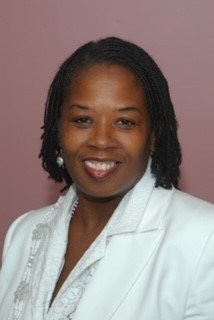
Esmerelda Simmons is the executive director of the Center for Law and Social Justice at Medgar Evers College in Brooklyn, NY, which provides legal services to people facing voter suppression and discrimination. Simmons has been fighting for equal rights for over three decades as a civil rights attorney. Simmons was raised in Brooklyn by immigrant parents from St. Croix. Simmons cites the “culture shock” of moving from public housing in a predominately Black neighborhood to a majority white area as an influence in her pursuit of civil and racial justice work. In 2014 she was named a New York State Woman Of Distinction, and in 2018 she received the Haywood Burns Award from the New York State Bar Association.
Melanie Campbell
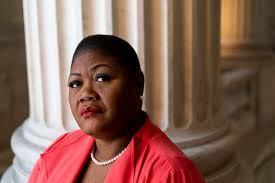
Melanie Campbell is the CEO of the National Coalition on Black Civic Participation and she has worked for youth and women’s rights for more than two decades. Campbell helped create Black Youth Vote!, a youth-focused leadership development program, which played a key role in the 2012 election. Campbell also runs the Black Women’s Roundtable, which advocates for policies to advance women, including appointing them to high-level positions in government. You can follow Campbell on twitter @coalitionbuildr
LaToya Ruby Frazier

LaToya Ruby Frazier is an acclaimed photographer and MacArthur Genius Award winner who treats her art like activism. Frazier’s photography focuses on images from industrial towns and cities across America that highlight the struggles of working-class Black families. Frazier’s powerful work illuminates how issues like racism, economic erosion, and environmental degradation make the “American dream” unattainable for most Black people. Frazier’s work was featured in the September 2020 issues of Vanity Fair, which featured the life and murder of Breonna Taylor.
Gabby Rivera

Gabby Rivera is a Queer activist and the author of Juliet Takes a Breath, a critically acclaimed coming-of-age story book about a queer Puerto Rican girl trying to figure out her identity. She’s also responsible for creating Marvel’s America Chavez, a comic featuring the franchise’s first queer, Latinx teen-girl superhero. Rivera serves as a Youth Programs Manager at GLSEN, a leading education organization focused on providing LGBTQ students with a safe experience at school. You can follow her on Twitter @QuirkyRican
Negin Farsad

Negin Farsad is a comedian and American-Muslim who uses her humor to call attention to social justice issues. Farsad is the acclaimed writer, director, and star of The Muslims are Coming!, a documentary meant to highlight and combat islamophobia by following American-Muslim comics on a tour around the United States. Farsad is also the author of How to Make White People Laugh, a memoir about the struggle of growing up Iranian-American after 9/11. Farsad’s work is proof that laughter can change the world. You can follow Farsad on Twitter @NeginFarsad
Ashton Applewhite
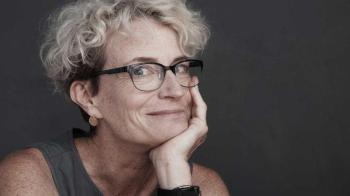
Ashton Applewhite is an anti-ageism activist and her book This Chair Rocks: A Manifesto Against Ageism flips the narrative on society’s view of aging (something to be avoided at all costs) to something positive, a process that unites us all. In Applewhite’s TedTalk, “Let’s end ageism” she address what she calls one of the last acceptable prejudices. “Aging is not a problem to be fixed or a disease to be cured,” she says. “It is a natural, powerful, lifelong process that unites us all.” You can follow Applewhite on Twitter @thischairrocks
Kimberley Chongyon Motley
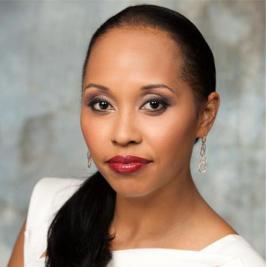
Kimberley Chongyon Motley is an international human rights and civil rights attorney from Milwaukee, Wisconsin. She is the first and only attorney from the West to work in Afghanistan, where she spends 9 months out of the year fighting for the freedom of countless victims. Motley is the author of 2 books: Lawless: A lawyer’s unrelenting fight for justice in a war zone and Lawless: A Lawyer’s Unrelenting Fight for Justice in One of the World’s Most Dangerous Places. In Motley’s TEDGlobal talk she shares her knowledge and expertise on international law, as well as her hands-on experience approaching criminal, commercial, civil, and human rights issues.
Mariah Moore
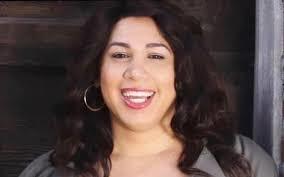
Mariah Moore is is the Organizing Program Associate for Transgender Law Center. Her work includes fighting to ensure equity, equality and safety for the transgender community, especially Black transgender women. Moore was featured in The Guardian in 2020 for her work in New Orleans when the pandemic hit. Moore, just 32, organized other trans activists in cultivating an emergency Covid fund and raised more than $20,000 for transgender and nonbinary citizens at risk. This activism led Moore to creating House of Tulip, Louisiana’s first refuge for trans and nonbinary residents. You can donate and follow House of Tulip on Twitter @houseoftulipno
Erika Andiola

Erika Andiola is an immigration rights activist and the Chief Advocacy Officer for the organization RAICES, a non-profit organization that aims to provide legal services to immigrants and refugees. In 2012, Andiola appeared on the cover of Time magazine with 35 other immigrants living in the U.S. without papers. Her Twitter @ErikaAndiola handle says she is “undocumented and unafraid.” Andiola went viral in 2014 when a video surfaced of her, and other Latinx activists, confronting former Representative. Steve King (R-Iowa) over federal immigration policy. Andiola also co-founded the Arizona Dream Act Coalition, an organization that fights for immigrant rights in her home state.
Patrisse Cullors
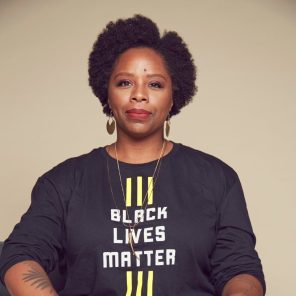
Patrisse Cullors is not only an author, artist, and activist, she is the woman responsible for the #BlackLivesMatter hashtag. Cullors wrote the hashtag after George Zimmerman was found not guilty of killing Trayvon Martin in 2013. Before that Cullors founded the group Dignity and Power Now in 2012 to fight for law enforcement reform, and dignity and power for incarcerated individuals, and advocates for the rights of the LGBGTQ community, in Los Angeles County. In 2017 Cullors, and the other founders of Black Lives Matter, received the Sydney Foundation Peace Prize for “building a powerful movement for racial equality.” You can follow Cullors on Twitter @OsopePatrisse
Alice Wong

Alice Wong is a the Founder and Director of the Disability Visibility Project, an online community which records and shares disability-related media. Wong’s advocacy for the disabled led to a national leadership profile and a 2013-2015 appointment to Obama’s National Council on Disability. In 2015, Wong attended the reception at the White House for the 25th anniversary of the Americans With Disabilities Act via telepresence robot. Wong is a writer and a podcaster. Her focus is on creating, amplifying and sharing disability media and culture. You can follow Wong on Twitter @DisVisibility
March 16, 2021
Outcry at Proposed Removal of Minerva Teichert Mural in Manti Temple
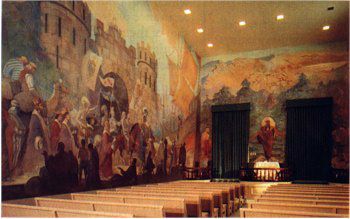 On March 12, the Church of Jesus Christ of Latter-day Saints announced it would remove historic murals from the Salt Lake and Manti Temples as part of the renovation process, leaving many of us reeling.
On March 12, the Church of Jesus Christ of Latter-day Saints announced it would remove historic murals from the Salt Lake and Manti Temples as part of the renovation process, leaving many of us reeling.
Of particular concern is the erasure of the work of Minerva Teichert. Heather Belnap, BYU Associate Professor of Art History provides some context for the mural in the Manti Temple:
“In 1947, as part of the centennial celebration for the arrival of the Mormon pioneers in Utah, Minerva Teichert was asked to paint a mural for the World Room in the Manti LDS Temple. Working day and night, she finished her magnificent ‘The Pageantry of History’ mural—which spans over 4,000 square feet—in only 23 days. She was completely exhausted and elated when she finished, and reported with satisfaction, ‘I am the first woman artist to ever be given such a commission in the church.’ Her entire career was centered around the telling of what she called ‘the Great Mormon story,’ and the Manti mural is her masterpiece.”
Many people have invested much of their lives to the study and preservation of LDS art. Writer and editor Lavina Fielding Anderson, one of the “September Six” infamously excommunicated in 1993 and yet has remained a devoted attendee of the Mormon church, feels deeply wounded by the impending loss. Her husband, Paul Anderson, was an architect and dedicated much of his life to the historic preservation of classic pioneer buildings, including several temples and tabernacles. Anderson was heavily involved with the work of Nauvoo Restoration. The dedication to art, architecture and historic preservation was central to the lives of Paul and Lavina.
Dialogue board member and art editor Andi Pitcher Davis reached out to Lavina Fielding Anderson, knowing how personally this would impact her. Here is Lavina’s response:
“On Wednesday and Thursday this week, I experienced such overwhelming sadness that I was almost paralyzed. I couldn’t stop crying. I was confused, baffled. It seemed inexplicable. The anniversary of Paul’s death is coming up at the end of the month, but no particular memory had triggered this pain. When I read the First Presidency’s announcement, I understood. Paul loved the pioneer temples and devoted his best efforts and most sensitive creativity to honoring their beauty and sacrifice. There is grieving on both sides of the veil over this decision, made all the more dreadful because the justification is numbers, numbers, numbers. I’m sick at heart.
“The April 2020 issue of the Journal of Mormon History published Paul’s 2004 essay on ‘Preserving the Manti Temple.’ It includes his terrible shock when the Logan Temple was ‘remodeled,’ meaning demolished to the walls, in the late 1970s. He literally saw a bulldozer driving around inside the structure. In that context, the preservation of the Manti Temple and its continued use of the live endowment was a triumph, thanks in large part to Paul’s boss, Florence Smith Jacobsen, and the devotion of Manti’s Saints, both past and present. Since my excommunication in 1993, two different First Presidencies have rejected my appeals for reinstatement, thus forbidding my entrance to the temple. For the first time, I’m not sorry about it.”
Pitcher emphasizes the pain of losing a site specific installation, “The World Room is a three story testament to the women of Mormonism who made this desert blossom as a rose. The removal of the Teichert mural is the ripping out of the still beating heart of the Mother.”
Professor Belnap beautifully summarizes our collective pain at the loss of Teichert and others’ art: “All of these artists painted with the conviction that theirs was a holy work, and these temple murals were sacred offerings. I have spent a lot of time with these pioneer artists and their art, and they have come to feel like old friends, even family. Their art has edified me, increased my connection to my heritage, and deepened my discipleship—and I know that it has blessed the lives of countless others.”
For many of us, Minerva Teichert is an oasis in a patriarchal desert. Almost all the paintings hung in Church spaces are both male focused and male produced. I heard recently in a podcast about Teichert that she submitted art to the Church to consider as the illustrations for the Book of Mormon. One can’t help but wonder how the Church might have been influenced had her more nuanced and inclusive works been used as opposed to Arnold Friberg’s muscle bound prophets. She tried to sell them to the Church but they didn’t want them, so she ended up donating them to BYU where they are on display at the Museum of Art, thanks in part to Paul Anderson. This mural erasure feels like not just another rejection of Minerva, but of the female voice, the feminine divine, and of our right to be in holy places.
Guest Post: At Night I Marry the Bed
Guest post by Jessica Knight
Jessica Knight is a writer and performer based in Melbourne. In 2018, she was the recipient of a Creative Victoria grant to create a show entitled Mormon Girl based around her experiences being raised Mormon, losing her religion and gaining freedom from sexual repression and shame. She is based in Naarm (Melbourne, Australia). You can read more of her at Gremlinface82@wordpress.com or follow her at @TheMess19 and on instagram @tinywhirlwind_82
Just don’t do it: the cornerstone of the Mormon religion.
When I was thirteen, I was visiting my friend from church. She had an eleven-year-old brother. While I was visiting, his parents caught him rubbing his crotch up and down the pantry door. He had obviously just discovered how amazing it felt.
My friend and I watched as her brother was taken into the living room and sat down for a talk. We listened through the closed door. It was all so funny to us. What was he doing that for?
He could have simply been told that it was something to do in the privacy of your bedroom. He was instead told that it was not right. He was told that, ‘You just don’t do it.’
*
I left my very first and only Silver Bullet vibrator in a bedroom in a large share house in Kensal Green, North London. It was 2009 and I had been happily flipping my own bean for about four years. I did not realize my diminutive implement of happy endings was missing until I was in Manchester. I had expected to find it while unpacking my suitcase in the bedroom of the house in which I would be living and working as a nanny. I owed rent to the place in London and did not have the money. I could hardly call up Patrick the creepy live-in landlord and ask if he had come across my vibrator while cleaning out my side of the bedroom. It was not all that large or expensive and I think the one double A battery that made it work had run out. I had become a little addicted to its magic as it had helped curb my initial intense homesickness and sexual frustration.
I grew up in a Mormon household. The Church of Jesus Christ of Latter-day Saints. There’s a musical about us. The church had guidelines for every aspect of your life. One of the things that is considered wrong and unholy in the eyes of the Lord was masturbation.
Yes, that delightful, harmless and disease-free past time was considered gross. This is so funny and inexplicable to me now that I stand before you, a proud and defiant apostate of the church. Apostate is just a fancy way of saying that I decided, through a process both of transgressions and thinking for myself, that perhaps the church was not as great or good for me as my parents and relatives had tried to make me believe.
There is a little pamphlet that you get as soon as you turn twelve. It is called ‘For the Strength of Youth’. Inside the pages is some very lovingly written information that invites you to dress modestly and save yourself, your sexy parts and feelings for your husband or wife. It says you are not to arouse sexual feeling in your own body. In the pamphlet you are told that Homosexuality and Lesbianism is a serious sin. You are told same-sex attraction saddens the Lord.
 Everything fun makes God sad. The person upstairs created all this stuff and then said, ‘Don’t touch any of it.’
Everything fun makes God sad. The person upstairs created all this stuff and then said, ‘Don’t touch any of it.’
I never understood why the church told young people not to masturbate. Did you really want to be so very ignorant about what made you feel sexually wonderful on your wedding night? Wouldn’t it be better to have the vocabulary and confidence to say what you needed, to steer your brand-new spouse around the map of your body?
I moved out at sixteen. I hesitated seven years before discovering the joys of self-love. The guilt surrounding sex is something that I found difficult to unlearn.
I got a job on Hamilton Island, a tropical destination of the wealthy. The job involved cleaning up fancy apartments after rich young adults had partied and puked and left grand amounts of alcohol behind. Because, when you are rich like that, you waste shit. The other cleaners and I would collect the bottles and sneak them back to our rooms.
I was still a virgin at this stage and rumour had it that Hamilton Island had the highest rate of STDs in Australia. I decided I was not losing my V while on an island full of people who may or may not have the disease that gives you cluster warts on your genitals.
It was there, with the warm breezes and sounds of the ocean floating through my window, that I slowly entered the wonder and majesty of self-reliant sexual pleasure. It was all very tentative at first, just a small and nervous hand caressing the stomach and slowly, very freaking slowly it moved towards the front of my underwear, over the knickers, until I found the spot that made my heart start humming, and a feeling that was so good: it amazed me that I had been made to feel so bad about it and put off doing it for so long. You could say that my working holiday on a tropical island was also a sort of honeymoon for myself.
It was not just that it felt good. Learning to make my own body feel sexually aroused was a huge deal. My body up until that point had never really felt like my own. It always felt like it was being shared or dissected and my insides moved around or added to. My body was a slab of malfunctioning meat and it was not unusual for it to be stripped down and stared at by multiple medical professionals at a time. When you are a kid with a body that is fascinating scientifically, it is easy to feel like you have no control over what happens to you and the skin you are in. While on that tropical island I discovered that I had way more control over my body than I was led to believe. Learning how to make this body sing a little and learning what caresses worked was like a whole new world.
After that I became aware that it was great for calming my nerves or helping me fall asleep. What an invention of the human nervous system. To think all through uni, I thought if I did anything like this, it indicated I could not get a boyfriend. I thought fluffing my own cream puff indicated that I was doomed to die alone, just as all those horrendous Mormon dances had me believing. It did not prove anything except independence.
All that wasted time reading the Book Of Mormon in preparation for the end of days. All that time spent believing that Jesus is going to come to earth a second time and you better be on the right sexual side when he arrives. What a wasted adolescence. I wonder if I would not have been so sad had I known that secret all along, how to make myself feel like the Second Coming.
March 15, 2021
Tens of thousands show support in Women’s March 4 Justice rally
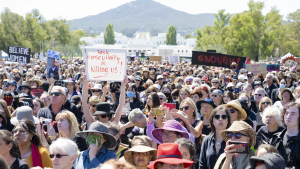 Tens of thousands of people have turned out to marches across Australia, protesting against the sexual abuse and harassment of women in the country. See an image gallery here.
Tens of thousands of people have turned out to marches across Australia, protesting against the sexual abuse and harassment of women in the country. See an image gallery here.
These rallies were spurred by a recent wave of allegations of sexual assault, centred around Australia’s parliament. Brittany Higgins was a staffer in office of the Minister of Defence when she was raped by another Liberal party staffer. The government moved to hide the assault, but eventually the prime minister was forced to address the issue, wherein he made a blundering and daft statement that further evidence of the issue of toxic masculinity in Australian parliament.  This is an ongoing story, but a powerful example of women standing together to demand justice.
This is an ongoing story, but a powerful example of women standing together to demand justice.
Can LDS Moms Stop Feeling Guilty for Wanting a Career Now?
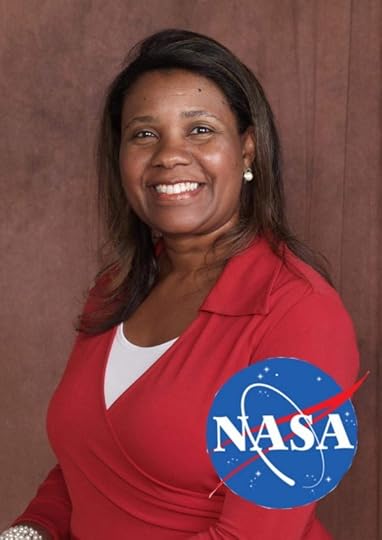
Michelle Amos, NASA engineer, mom of three, and currently serving with her mission president husband in Louisiana
Last month, the Deseret News (a church owned paper in Utah) ran a story about a very, very cool woman named Michelle Wright Amos. She’s currently serving in Louisiana with her mission president husband, but before that, she had a 30 year career with NASA, most recently working at the John F. Kennedy Space Center in Florida. For almost a year before leaving to serve with her husband, she worked on the Mars 2020 rover as a systems engineer – the same rover that landed successfully on Mars last month.
Here is the article about her: https://www.deseret.com/faith/2021/2/19/22290171/former-nasa-engineer-watches-perseverance-rover-land-on-mars-while-serving-latter-day-saint-mission
She’s incredible and deserves all the publicity plus more. She earned her degree in electrical engineering first, then 16 years later a Master of Science in engineering management. She’s had multiple honors throughout her career, including an All Star Award at NASA’S Women of Color in Government and Defense Technology, chairing NASA’s Black Employee Strategy Team, and a KSC Strategic Leadership Award. She’s so awesome that she even has her own Wikipedia page, which is a level of engineering superstardom that I assume few people in her field have reached. I originally saw the article from Deseret News shared online, then I overheard my husband showing it to our seven year old daughter. In all the comments I’ve read in LDS online forums and comments, as well as from the over 200 missionaries who watched the launch with her over zoom, I have only heard Latter-day Saints express their pride and admiration for her achievements.
Sister Amos’ missionaries watched the Mars rover land over zoom with her.
What was interesting to me upon further reflection was the fact that by having a successful career while also a mother of young children (she has three kids, the same number as me!) she was doing exactly what women in our church were told not to do my entire life. I was born in 1981, and one message I heard consistently from birth to my thirties was that God wanted women to stay at home with their children and only go into paid employment if there was an absolute, life or death situation, need for it.
I can’t say without knowing her personally if Michelle worked all of those years out of necessity, but her husband was a commissioned officer in the navy and had a long and successful career as a nuclear power engineer. Nothing about his biography in any way describes a man who was disabled or unable to secure regular employment. My best guess is that she was smart, talented, and wanted a career in engineering, so she went for it with the support of her family.
In 1989, the same year that I was baptized, Michelle graduated college with her first electrical engineering degree. I have memories around that age from primary lessons on Mother’s Day instructing me how important it was that moms should stay home with their children. I decided to search Google to help me find what leaders of our church were officially saying about women, girls, motherhood and working in the 80s, when Michelle made her decision to go for a career in engineering.
It was easy to find quotes from back then about God commanding women to stay at home, because there seem to be hundreds of them from top church leaders. I personally grew up hearing these things explicitly taught almost every week in church, primary programs, young women’s activities, and even girl’s camp. Ezra Taft Benson was the prophet from 1985 to 1994, precisely when Michelle was finishing her schooling and starting her career and family, and he said:
“Beguiling voices in the world… maintain that some women are better suited for careers than for marriage and motherhood. These individuals spread their discontent by the propaganda that there are more exciting and self-fulfilling roles for women than homemaking. Some even have been bold to suggest that the Church move away from the ‘Mormon woman stereotype’ of homemaking and rearing children.” (“The Honored Place of Woman,” Ensign, Nov. 1981, 105).
Also President Benson: “One apparent impact of the women’s movement has been the feelings of discontent it has created among young women who have chosen the role of wife and mother. They are often made to feel that there are more exciting and self-fulfilling roles for women than housework, diaper changing, and children calling for mother. This view loses sight of the eternal perspective that God elected women to the noble role of mother and that exaltation is eternal fatherhood and eternal motherhood (‘To the Elect Women of the Kingdom of God,’ Nauvoo Illinois Relief Society Dedication, 30 June 1978)” (Teachings of Ezra Taft Benson, 548).
Howard W. Hunter, the prophet right after President Benson, said:
“It seems strange that women want to enter into professions and into work and into places in society on an equality with men, wanting to dress like men and carry on men’s work. I don’t deny the fact that women are capable of doing so, but as I read the scriptures, I find it hard to reconcile this with what the Lord has said about women—what he has said about the family, what he has said about children.” (Teachings of Howard W. Hunter, 150).
Richard G Scott, an apostle during this time:
“Of course, as a woman you can do exceptionally well in the workplace, but is that the best use of your divinely appointed talents and feminine traits? As a husband, don’t encourage your wife to go to work to help in your divinely appointed responsibility of providing resources for the family, if you can possibly avoid it. As the prophets have counseled, to the extent possible with the help of the Lord, as parents, work together to keep Mother in the home.” (in Conference Report, Oct. 1996, 102; or Ensign, Nov. 1996, 74–75).
As far as I can judge from the situation, Michelle Amos (who is awesome) did not follow very direct counsel from the prophet and twelve apostles as she made important life decisions for herself. She looked inside herself, followed her own heart and inspiration, and is a huge success for doing so.
Is she now being touted as a failure in the media and amongst church members? Are her kids publicly decrying her selfish choices? Is she a cautionary tale about what happens when you purposefully disobey the prophet? No. She’s a hero to church members, admired by everyone from the media to her missionaries to anonymous internet commenters.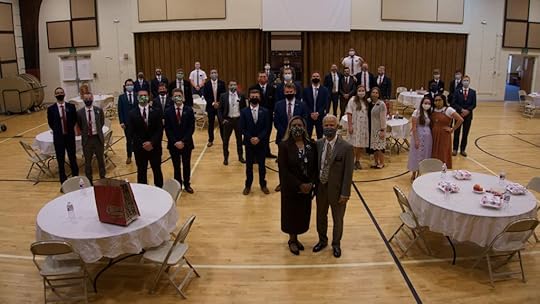
I’m a 39 year old stay at home mom and generally happy with my life, but also a little sad that I didn’t follow my heart like Michelle Amos. My dad went to MIT on a scholarship and had a successful career as an aeronautical engineer. I only have one older sister and no brothers, and I wondered sometimes growing up if he was ever disappointed not to have had a son to pass his talents for science, math and engineering on to. While he never discouraged me from learning about the things he loved, my church lessons very actively taught me not to bother learning them. So I didn’t.
What if I would’ve made a brilliant engineer if I’d had some encouragement to go for it, instead of years of constant pressure to set any career ambitions aside? I don’t blame Michelle Amos for choosing to be an engineer instead of a stay at home mom, and likewise I understand why I didn’t and forgive myself – but I feel sad that I didn’t do what she did, and a little angry that I was told in such clear terms that choosing anything other than full time motherhood was sinful. I wish I had a life a little more like Michelle Amos, but I feel like it’s too late for that. What did she have inside of her that guided her to do what I didn’t, even though I wanted to?I hope this positive reception of her career in the church is a sign that the next generation of young women can choose to pursue both a family and a career – just like men have always done. I hope my daughters feel like they’ll simply have a choice between being a stay at home mom and working, rather than what I believed was a choice between being obedient to God or following the adversary. At this point it’s probably too late to follow my dad’s footsteps and help launch rockets, but I do hope I can launch some young women in my life into a career that they will love as much as Michelle Amos loved hers.

Michelle at her kitchen table, excitedly watching the Mars rover launch that she’d worked on before serving in the mission.
Post script: After I wrote this blog post a couple weeks ago, I was excited to see Sister Amos and her husband interviewed on the podcast Mormonland. I listened, and Peggy Fletcher Stack asked her the question that made me to write this post. She said, “Sister Amos, did you ever get pushback for working full time and being a church leader, too?” (I think she meant to say “working full time and BEING A MOTHER”, but luckily Michelle answered both questions.)
Sister Amos: “I did. I remember the era of stay at home moms. Members of the church encouraging – members of our leadership, our prophets in the church, would encourage mothers to stay at home. I also remember reading where we were supposed to gain knowledge, and it was to our advantage to gain knowledge, and that knowledge is eternal, it’s celestial. It’s something that will go with us in the next life. And so in my family, we were highly encouraged to go to college, and so it was always a part of my dreams to go to college and become an engineer. I didn’t think I was going to work for NASA, but working for NASA was just like the cherry on top.
“So yeah, there was some pushback, and even in the church, in some of our organizations, I’ve always worked. It has never prevented me from holding any calling. I’ve been relief society president as a full time engineer at Kennedy Space Center. I’ve been stake leaders, I’ve held many positions. I’ve been asked to lead big activities in the community for the church. I believe a lot of the organizational skills – working with people, working in the public eye, has helped me to be a better mother, as well as a better leader in the church. And today, it has not prevented me from being called to serve on a mission. So I highly encourage young women and mothers to gain as much knowledge as they can and to be able to support their families, just in case there is something, some reason where their husband can’t provide, women need to be able to support the family.”
I would add to her comments that young women should be able to support themselves and their families not only in case their husband can’t, but simply because they WANT to. I mean, it’s 2021, we’ve put a motor vehicle on the surface or Mars, found a cure for a global pandemic, and a working mother is now leading an LDS mission – so why not?

Michelle with her husband and one of their missionaries. You can tell she has a warm smile even with her face covered in a mask!

With sister missionaries, who I am sure are as inspired by her as I am.
March 14, 2021
Church In The Age Of Covid: Defining What Makes a Good Latter-Day Saint
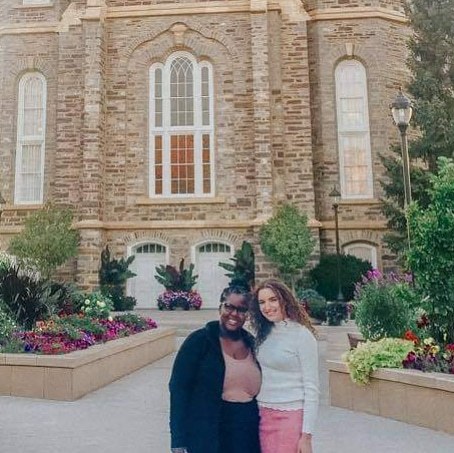 I thought visiting Utah made me the perfect Latter-day Saint. All it did was make me better at hiding the things which made me imperfectly myself.The author uses Barbadian (Bajan) dialect in this article
I thought visiting Utah made me the perfect Latter-day Saint. All it did was make me better at hiding the things which made me imperfectly myself.The author uses Barbadian (Bajan) dialect in this articleAs a young child growing up in the Caribbean, local superstitions tended to be taught through the generations. From an early age, I was taught about the Heart Man, or why I should run when I saw a hearse(funeral car which carried the body of the deceased) instead of sticking around to ask silly questions. I was instructed to never open an umbrella once inside of someone’s home as it was thought to bring “duppies” (unwelcomed ghosts) and why children should never chew chewing gum as it was thought that the gum would wrap around your “navel string” (bellybutton) and “hang yuh” (choke) from the inside.
I believed these legends. In my young brain, the adults were never wrong. It meant that I would often run home before the streetlights came on with fear that I met some unwelcomed guest or worse yet, ran into the Heart Man who would only signal doom and gloom in my life.
I consider myself one of the fortunate girls who spent more time outdoors than glued to television sets. I hung out with the neighborhood boys all summer where we would climb all the trees and would relieve our neighbors of the yummy plums, ackees or whatever fruit we could eat that day. I fell out of those trees, scraped knees and learned how to fight in that tiny coastal neighborhood.
Looking back now, I recognized that those early childhood years taught me so much about being a strong individual. As the lone girl among a group of boys, I learned early on that I had a responsibility to believe that I had power and brought value to my friends’ group. As wonderful as this sentiment is, I recognize that it sometimes doesn’t transfer when it comes to my spiritual life.
I am still a relatively new convert. In December, I celebrated my fourth year as a member. In this time, I’ve become really familiar with Mormon Guilt. I know some of you who are active members are probably somewhere ready with reeds ready to yell at me for using the “M” word yet I’ve realized that Church of Jesus Christ of Latter Day Saints Guilt just doesn’t have the same catchy ring to it.
In my relatively short time as a member, I’ve always wondered if there was a switch that magically turned on when it came to Momon Guilt. Before joining the church, I was never the person who needed validation where it came to my understanding of being a good person. Yet, as I watched myself going through the motions during the height of COVID, I recognized that although I had attempted to nip the part of me which overcompensated in the bud, that COVID brought all of those over-compulsive behaviors back.
Before spiritually combusting a few months ago, I never understood spiritual exhaustion and wondered why people complained suddenly and left the church. In my eyes, I was the good, model example of a young woman who aspired to do all she could to live the gospel. Each time I caught myself slipping, I would add a greater load upon myself.
To be seen as an example, I believed that needed to spread myself wafer thin so that others could see my efforts. I attended two Institute classes (and still do).I would attend church like my life depended upon it even on the weeks where I was too sick to stand without assistance. I believed that saying “no” meant unworthiness and showed a lack of faith and trust in my Heavenly Father who would give me the energy to do everything I put my mind to.
A few months in , after attending my friend’s sacrament meeting in India via Zoom, I cracked. That morning, sitting alone in my room at two in the morning, I realised that I had finally bitten off more than I could chew. After months of floundering and trying to keep my head above water, I had finally hit rock bottom.
Even now, I have never felt that weight so heavily. I cracked, breaking completely down the middle. I could almost hear the devil on my shoulder saying “dah fuh lick yuh”(serves you right/ that’s what you get). I felt more exhausted than ever, and my anxiety spiraled out of control. I soon realized that I had to take a step back.
Cultivating a healthy relationship spiritually was much more important than “keeping up wid the Joneses”(trying to be in competition with others). I dialed back and found unique ways to do spiritual things.
Months later, when I caught COVID-19 myself, I recognized the importance of strong simplicity as it relates to living in accordance with God’s will. Sure, serving him with all our might means that we may have to stretch ourselves, but it doesn’t mean that in our efforts, we should break under the pressure which stems from cultural norms we experience as members of the church.
If we fall into the trap of competition, contention and comparison, we need to recognize that this has nothing to do with being a good Latter Day Saint. The most important lesson learned is that “Overcompensation is not of the Spirit”. It comes from our own innate need to be seen, recognized and validated.
And maybe…we need not to let church culture determine who we become as human beings.
* Ramona is from the small Caribbean island of Barbados. She is currently a Marriage and Family Studies student pursuing her undergraduate at BYU-Idaho Online.
March 13, 2021
Young Women Lesson: How Can I Resist Pornography?
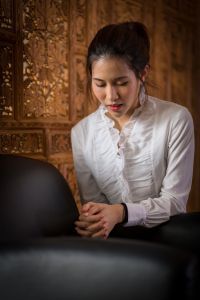 This lesson is meant to correlate with June 2021 Come Follow Me about pornography, though it can likely be adapted to other lessons.
This lesson is meant to correlate with June 2021 Come Follow Me about pornography, though it can likely be adapted to other lessons.
It can be tempting to cast pornography as a “male” problem within the Church. I have certainly sat through many lessons which presupposed that the only discussion would involve helping male family members repent. This lesson is directed to young women. Young women can struggle with viewing pornography, and may feel even more ashamed that they’re tempted by something they’re supposedly “immune” to. Girls can struggle with compulsive masturbation. So as you frame this lesson, keep in mind that any of the girls in your class may already be dealing with an addiction and accompanying feelings of shame. If possible with available technology, a good way to introduce the topic would be to show “Pornography Addiction: Is There Hope?” This short video features a young woman discussing her struggle to overcome a pornography addiction. There is a link on the original lesson plan and can also be found here.
In my experience both as a Young Woman and as a leader, participation with this kind of lesson is likely to be a problem. This may not be true for all groups in which case hooray for you! But I am proceeding from the assumption that this lesson might need a bit more herding, prompting, and leader talk than others. I suggest creating a box/hat/other opaque receptacle and providing young women with index cards and pens, inviting them to take a few minutes to write down questions they may have relating to this topic. Assure them that you have also written down possible questions that are already in the hat and no one will know who asked what. Do everything possible to ensure the privacy of class members. Use these questions to direct the conversation. It may be that none of your class members will write anything, but since they won’t know which questions are yours they may be more engaged wondering if their peers were willing to ask.
Some possible questions you might write out in advance might be:
Can you really be “addicted” to pornography? It isn’t a drug. Is that just an excuse not to quit?
I didn’t mean to see it, but I couldn’t look away. Now I can’t stop thinking about it and I feel awful. What is wrong with me?
If sex is part of God’s plan, then what is so different about watching it? You’re not participating.
On TV people talk about watching porn like it isn’t a big deal, and couples even watch together. So why do we make such a fuss?
Sharing pictures isn’t the same thing as sex, and it doesn’t risk pregnancy. Isn’t this a safe alternative to share with your boyfriend when you’re in love?
I’ve tried stopping looking at pornography but I can’t seem to. What do I do? I feel like God must be so upset at me.
Why are we talking about this? Isn’t this a guy problem?
I don’t struggle with pornography but my brother / friend / classmate / boyfriend might. What can I do to help?
I’m not going to outline possible approaches to all of these questions, and you may come up with others that you think are particularly relevant to your class. I have not presented these in any particular order, and doing them all would likely be impossible in one class session. But here are some possible approaches. Don’t worry about not getting through all the questions. Assure the girls that any questions you don’t cover today can be revisited the following week (you can look through the hat later to see if any unanswered questions from the girls remain).
Can you really be “addicted” to something if it isn’t a substance? Isn’t that just an excuse?
“I didn’t mean to see it, but I couldn’t look away. Now I can’t stop thinking about it and I feel awful. What is wrong with me?
True doctrine: Sex feelings are given by God because God wants us to be happy and have joy and pleasure in marriage and reproduction. 2 Nephi 2:25 – Adam fell that men might be, men are that they might have joy.
A possible answer: Happy chemicals like dopamine and oxytocin function in our brains in many healthy ways and are a crucial part of healthy sexuality. Have you ever watched a romantic movie and felt all bubbly afterward? Or had your crush smile at you and you were happy the rest of the day? (Invite them to share on these pretty tame topics). Those are feelings God gave you, and they are good to feel. But with pornography, the rush may be much more powerful than watching a kiss in a Disney movie. The release of those chemicals can generate a euphoria, a thrill that quite naturally you want to experience again. However, over time your brain will need more and more stimulation to achieve the same result. What fairly minor exposure might thrill the first ten times will deliver less by the fifteenth or twentieth, and you’ll seek something a bit more daring.
When something happens to you by accident, are you to blame? Invite them to share examples they’re comfortable with (likely non-sexual). If you accidentally see pornography and you feel your mind or body respond, don’t feel guilty. Your body is designed to respond to sexual stimulation, by divine design. An accident and an initial chemical response is not a sin. The problem is in seeking out and trying to repeat that experience, escalating over time.
“If sex between a man and a woman is ordained of God, then why is watching male/female sex so bad?”
True doctrine: Sex is good. God designed sex to be a mutual act between committed loving people. Lust is a word that is used in scripture to describe sex without commitment, love, or mutual care. Doctrine and Covenants 63:16 – “And verily I say unto you, as I have said before, he that looketh on a woman to lust after her, or if any shall commit adultery in their hearts, they shall not have the Spirit, but shall deny the faith and shall fear.”
One approach to this question would be to create two columns on the board to illustrate the differences between a committed consensual loving relationship and pornographic representation of sex. If the girls are slow to participate, offer information about pornography (as suggested below) and then invite discussion about how God’s vision is different.
How is pornography not like healthy sexuality?
Pornography is a one way street. You receive and you never give. If you get bored you just click away. How is marriage different?
Pornography doesn’t focus on communication. How is marriage different? Communication is a key part of sex and love. With pornography there’s no communication of discomfort, preference or emotion. There’s no laughter at awkward moments or speaking loving nicknames.
Pornography tends to privilege male pleasure and stimulation. The female actors may act like they are enjoying it, but that too is for male satisfaction. This perpetuates and enforces a message that sex is about men enjoying themselves, not about mutual pleasure. How are good relationships different from this? (You don’t have to make their responses specifically about sex. Do you want your friends to listen to you and care how you feel? Do you care how your friends feel?)
What are your favorite moments in romantic movies or books? Pornography doesn’t depict any kind of relationship between the people. It doesn’t depict any of the lead-up to sex – meeting, falling in love, making commitments. Or the short term – romance, communication, foreplay. It’s just penetration and orgasm. While romantic movies aren’t realistic, many do at least mimic God’s intent – that sex should be tied to love, commitment, communication and friendship.
Sex workers are human beings with lives. Why might they might be participating in pornography? Some people freely choose a career in the sex trade. Many, however, would choose another life if they could. Drugs, abuse, trafficking, poverty … many factors contribute to acting in pornography potentially not being a fully consensual activity. God designed sex to be about genuine enjoyment, freely chosen. The actors are actors – they may be virtual strangers to one another. God did not design sex to be a choreographed act between strangers, neither of whom are participating primarily for personal enjoyment.
What strategies can your family use to help keep everyone safe from technology pitfalls? (families may already have rules)
True Doctrine: God does not expect us to fight our battles alone. We are placed in families so we can support one another. We have church organizations and auxiliaries to support one another. We have the support of the Savior. “Families are a divine part of God’s plan. They are the fundamental building block of strong societies. Families are where we can feel love and learn how to love others. Life is tough, and we need people we can lean on. Home is a safe haven where we can get advice, support, hugs, and, when necessary, chocolate chip cookies.” (https://www.comeuntochrist.org/beliefs/family/importance-of-families)
Note: Many girls may have difficult family relationships. It may be important to emphasize other ties that can offer support, such as the YW organization, social workers, foster parents, school counsellors or others depending on the situation of your class members.
Invite girls to talk in small groups or create a brainstorm list on the chalk board describing various ways of protecting ourselves and our loved ones. Examples might include no closed doors; parents get access at all times to scroll through phones; phones and devices charge in parents’ bedroom and can’t be accessed after bedtime; no solo devices until a certain age; filters and other protections.
“Sharing pictures isn’t the same thing as sex, and it doesn’t risk procreation, so isn’t it an okay alternative if you are in love with the person?”
True doctrine: God created your body and you are beautiful and wonderful. Sharing your naked body will be a good thing when you are married to someone who loves and respects you. “So God created man in his own image, in the image of God created he him; male and female created he them.” (Genesis 1:27) “And he answered and said unto them, Have ye not read, that he which made them at the beginning made them male and female, And said, For this cause shall a man leave father and mother, and shall cleave to his wife: and they twain shall be one flesh?” (Matthew 19: 4-5)
Why might a young woman, including class members and people at your school, find themselves creating and/or sharing erotic content? This may sound like an absurd question to some, but sexting, creating and sending pornographic images etc. is not uncommon. It is likely that even if none of the girls in your class are engaging in this, they know someone at school who has. Explain that sending unclothed or sexually explicit/suggestive photographs or messages constitutes creating pornography. (Side note: When I was in Young Women we would hear that young women could become walking pornography to the men around us by wearing tight clothing or having a female body in public. Basically. So I want to make really clear here that I am distinguishing between intentionally creating and sharing erotic content, and simply having a curvy body and wearing clothes. Human beings are not porn. They have the capacity to create pornography if they choose.)
Why might a young woman create pornographic content? Answers might include:
Perhaps she is in love with her boyfriend and they feel it is an acceptable alternative to more contact-based sex (when you’re in love sexual desire is a normal part of that!)
Perhaps she feels pressured by her boyfriend since she is unwilling to have sex (we want to please the people we love!)
Perhaps her peers are doing it (we all want to belong!)
Perhaps she wants validation on social media or other platforms (we all want to feel loved and admired!)
Note that I added validation after each of those reasons. I’m not intending to encourage naked selfies, but the impulses behind sending them are completely understandable and normal. The goal here is not to “other” girls who may be participating as if they are stupid and vain, but to emphasize what is good and natural while redirecting the expression into safer channels.
What are the dangers of creating or performing in pornography of the kind we’ve outlined (not what are the dangers to professional porn actors. What is the danger to a high school junior who sends a nude photo to her boyfriend?) Answers might include:
An image is forever. Perhaps you will marry the boy and your love is a forever love, and neither of you will ever willingly share this personal item. But that picture is still in the cloud somewhere and is just a hacker away from being public. Scarlett Johansson, for example, sent naked pictures to her husband only to have them show up later in tabloids due to hackers.
Perhaps your love won’t stand the test of time. Revenge porn is real – when an angry ex wants to hurt a young woman by putting personal sexual images on the internet. Or more simply, your angry boyfriend may just send the pictures to his friends and brand you a slut.
Perhaps your boyfriend is a doofus. He’s proud of how sexy his girlfriend is and sends the picture to his best friend. Who is also a doofus, and sends it to three more people. Or maybe he just lends his phone to a friend to make a call and things go from there.
An image that you think is ephemeral (for instance, snapchat or other apps that supposedly are erased) is in fact not. Screen grabs and other technologies allow people to keep and share an image far beyond the range that you wanted. Teens can be quite naive about this. Others are savvier than their leaders. What apps exist that might be forums for this kind of issue? (the girls may well know far more than you do. Consider assigning a young woman in advance to research and explain about apps that claim to offer confidentiality and privacy, but cannot guarantee it).
Members of the class are legally minors, and are thus creating and trafficking in child pornography. If a girl is over eighteen and her boyfriend is not, or vice versa, the penalties can be even more severe. Creating and transmitting pornographic images of minors is a crime. You can be prosecuted for sending them, you can be prosecuted for keeping them. If someone sends you a picture and you delete it because you didn’t want it, in general this is not prosecutable – you can’t stop people from sending you a text you don’t expect. Laws vary by country and jurisdiction within countries. You might consider assigning a young woman to research this in your area, or make it a class project if you suspect it may be a serious concern.
I’m addicted to pornography. I can’t seem to stop, and I feel like God doesn’t love me anymore, and I’ll never be able to make temple covenants.
True Doctrine: No matter what you do, God loves you and wants to hear from you. You can be forgiven and be healed. There is always a way.
1 Corinthians 10:13 “There hath no temptation taken you but such as is common to [everyone]: but God is faithful, who will not suffer you to be tempted above that ye are able; but will with the temptation also make a way to escape, that ye may be able to bear it.”
Doctrine and Covenants 58:42 “Behold [she] who has repented of [her] sins, the same is forgiven, and I, the Lord, remember them no more.
The lesson prompt was “How can I resist pornography” which is functionally different from “How can I quit pornography.” However, there may be young women in your class aching to know the answer to the latter question. One good resource to study together as a class is the pamphlet “Let Virtue Garnish Thy Thoughts” which is also available online here. Emphasize that it would be very unusual for a teenager to be able to overcome addiction all by herself – few adults manage it with years more of experience. Some possible discussion questions to explore as you study the pamphlet might be:
What false ideas contribute to discouragement in the repentance process? (God doesn’t like me, I can’t change, God wouldn’t want to hear my prayers, I’ve messed up too often to be forgiven etc.)
What rationalizations might someone use to justify pornography use?
What spiritual tools do we have to help strengthen us as we try to change?
What does forgiveness feel like to you?
Who in your life can you confide in who might help you?
What triggers a desire for pornography? What can you change in your schedule and life to disrupt that pattern?
Possible Action plans depending on class needs:
Delete provocative photos from all apps and cloud
Discuss plans with parents to make the home a safe place from pornography
Pray to the Lord for help and for forgiveness
Write in your journal about the lesson and what feelings or impressions you had
March 11, 2021
Leave Converts Our Agency
Guest post by Nicole Sbitani. Nicole is an adult convert, a non-Black woman of color, and a professional diplomat. She blogs at nandm.sbitani.com and writes microfiction. @nsbitani on Twitter. The content of this post does not represent the views of the U.S. Department of State or any other U.S. Government agency, department, or entity. The thoughts and opinions expressed here are solely those of the author and in no way should be associated with the U.S. Government.

The other day, a dear friend shared a Tweet that resonated with me as a 2nd-generation American. The Tweet, by Ahir Shah, reads: “I will never love Britain enough for some white people, nor hate it enough for others”. Many immigrants and diaspora members understand this struggle well. Antagonists on the political right say things like, “If you don’t like things here, go back to where you came from.” But antagonists on the political left say things like, “Only bigots call themselves patriots.” These extremes leave no room for people who take sincere pride in some aspects of their country and challenge it to do better through sharp criticism of other aspects.
As I reflected on the political tones of that message, I thought of how much it applies to my experience in the Church of Jesus Christ of Latter-day Saints. As an adult convert, I was thrilled to find the Church. There were things I already believed before I discovered that they were part of the LDS Church’s official doctrine. I followed the advice in the Book of Mormon, prayed, and felt that the Restored Gospel was true. In my own way, I received the confirmation of the Spirit that getting baptized was the right choice for me.
At the same time, I discovered aspects of Church doctrine, history, and culture that broke my heart. These include both well-known things, like the Proclamation on the Family, and less-known things, like the sealing of Jane Manning James not in marriage or adoption but in eternal servitude.
Free agency is essential to God’s plan for us. Helaman 14:30 reads, “…for behold, ye are free; ye are permitted to act for yourselves; for behold, God hath given unto you acknowledge and he hath made you free.” Yet I’ve heard things like, “Well if you have so many problems with the Church, why did you even join?” Simultaneously, those who have had very different experiences will say things like, “There are no good people in the Church.”
There is a constant tension between those who would stay within an institution and improve it and those who believe change from the inside is no longer possible or practical. This phenomenon is not unique to the Church or religion, but with something as core to people’s sense of self as faith it can take on added intensity.
Everyone has a line that, if crossed, means you can no longer stay within an institution for issues of pragmatism or principle or even just sheer exhaustion. But the only person who has ever been able to determine if that line has been crossed, is each of us. We don’t get to outsource that moral responsibility to someone else. And others don’t get to take that agency from us, either.
Converts don’t need pity or pedestalization. Those of us who freely chose to join the Church deserve to be treated as responsible adults, not victims who fell for a scam (whether you believe that “scam” is the Book of Mormon or anti-Mormon literature). Converts are not a monolith, but most of us are not interested in serving as someone else’s talking point in arguments for or against the Church.
We should simply love people and respect their choices regardless of whether they stay or go. It’s just the right thing to do.
March 10, 2021
The Truth About the Bridge
“Stories form bridges that other people might cross, to feel their way into another experience.” Dian Million, Therapeutic Nations: Healing in an Age of Indigenous Human Rights
I’d like you to come with me on a hike. It’s one of my favorites, crisscrossing high desert prairies, skirting a lake, and leading, eventually, to a cold rocky stream. I’m excited to show you my beloved mountain home, so water bottles in hand, let’s set out.
If we hike in Summer, dry grasses leave kernels on our pants and the trail coats our feet in dust. After walking past a prickly pear cactus next to a log bench, we arrive at a wooden bridge. You might laugh to see this bridge crossing dry ground. Being new to the area, you only see it for what it is in this moment: 20 or so wooden planks with nothing but a yarrow plant and a rabbit underneath. No mosquitoes or dragonflies buzz, no cattails or mosses grow. You might think it’s a waste of elusive park funds, this short bridge over scrub brush, and most of the year, that’s true.
But if you come with me in Spring, when snow melt leaves the mountains and flows down to my little green space, you’ll see with different eyes. In Spring, the smell of new growth follows us to the bridge. We see yellow butterflies dancing through the grass, sitting on heavy-headed stalks. If you step off the path you’ll lose one of your Tevas in the noxious mud. You see, those who live near the park know that mountain runoff doesn’t stay in well-defined boundaries. It creeps underground, across artificial borders, carrying life-giving moisture to nourish the cacti and yarrow long after our trail has dried. In Spring, you’ll understand the purpose of that bridge, and you’ll be grateful for it.
There are times when I rest on the log bench before crossing the bridge. I let the butterflies land next to me and I delight in the rabbit popping out now and then, a friendly reminder that the bridge serves more than I can see. As much as I would like to rinse my feet in our cool mountain stream, it would be silly for me to demand that it cross the bridge to me. Streams are fickle creatures and don’t care much for the needs of humans.
And if you’re tired and foot sore when we reach the bench, I don’t mind if you rest on the bench. I may choose to cross the bridge before you’re ready. I have strong mountain lungs and my feet and this path are old friends. I know you’ll be fine without me for awhile. We progress at our own pace, you and I, secure in our friendship. When you’re rested, cross the bridge and follow the trail. I’ll save a seat for you by the stream.
As I type this tonight, I’m thinking about bridges I’ve crossed in the past, at times reluctantly, and at other times, joyously. When I first hiked this path, I didn’t reach the stream. I saw the bridge, rolled my Chicago-raised eyes at the silliness of it, and turned back. The next time I hiked, I ate a sandwich on the bench. Children clattered across the bridge, laughing about the crawdads they would catch at the stream. That day, I extended my hike further than I intended so I could reach the creek. “Still,” I thought, “What a waste of money, building that bridge.”
All that summer I hiked, and after winter’s sleep, I looked forward to the trail I had begun to think of as mine. And I learned, during that muddy spring, why we need the bridge. Someone who knew more than me, someone with experience or foresight, built a bridge that most hikers, most of the year, didn’t need. For me, it only took one incredulous step into the boggy murk to teach me how vital that bridge had been all along. I think of how long it took me to recognize what other people around me had known for some time: the bridge would prove a savior in the right season.
I think of the time I spent sitting on the bench. It was pleasant there, and I felt no need to move toward a goal, not realizing how delightful mountain water feels after a dusty walk. Not seeing the full landscape, I never could have understood either the reward at the end or the role the bridge served in reaching that goal.
A bridge can be a metaphor for many things. Tonight, I think about my children. Each one of them is a misfit in the conservative society in which they were raised. Each one defies the box I, and other people, tried to put them in. Each of them, having broken through chains of judgment and grief, has stood on the opposite side of a bridge, urging me to cross, pleading with me to believe in the reward. No matter how reluctant I’ve been, or how much it hurt to leave the bench, when I’ve trusted their knowledge of the landscape, I’ve been blessed with a soothing mountain stream for trail-sore feet.
I admit that in the past, I’ve made the mistake of demanding that they cross back to my side of the bridge, the side where they found pain and exclusion. In my presumed right-ness, which was really just pride, I only succeeded in adding to their grief. I cannot sit on a bench and watch my children suffer next to me if a few steps across a couple of wooden planks would set us on a better path.
But it can be challenging to leave the security of the bench. It can be hard to admit that my preconceived notions of the usefulness of the bridge were wrong, and perhaps even dangerous. It hurts to think of the times I’ve refused to cross, insisting instead that my children come back to my side. Even knowing I meant well, those regrets seem overwhelming sometimes, and I wish I could back up, redo the trail, and take a different turn. But I’ve never regretted walking across a bridge when offered one. By leaving the security of the bench, I’ve seen new creations, found new comforts, and come to understand new glories.
In the thirteen years we’ve lived here, my little bridge has been destroyed several times. Once it was burned, the fire human-caused. Once it was washed away by torrential floods that covered the park and devastated whole communities. When the floods receded, it was months before anyone could get to the spot where the bridge had once been. Outsiders, unfamiliar with the trails, thought, like I had, that it was a waste of money needed elsewhere. So we waited. One year, almost two, until volunteers and donations built the bridge again.
No one will force you to cross the bridge, dear friend. And perhaps you could find another route to the stream. I’ve been all over this park, but I tend to stay on the trails, not interested in destroying our fragile green space by forging my own path. I hope you’ll trust me, though. I promise the water will feel good on those blisters, and I packed some chocolate we can share at the end. I’m happy you’re on the journey with me, because as much as I love this hike, it’s so much more enjoyable with you beside me.
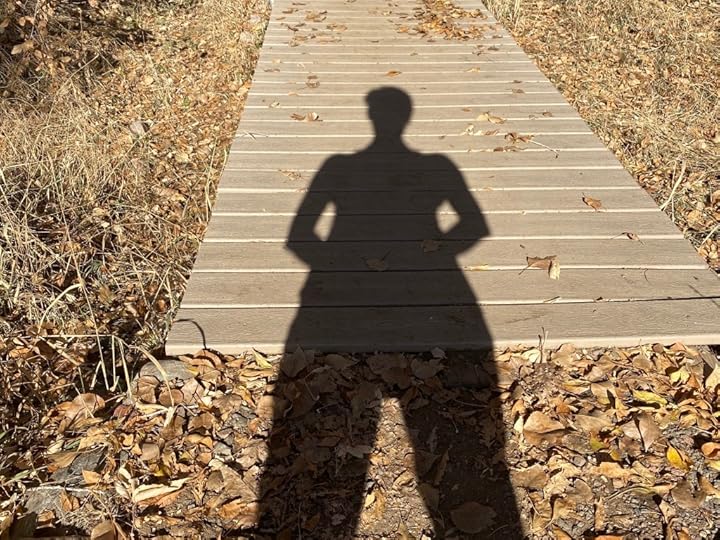
When we trust those who know the trail, the path is easier and our experience richer
March 9, 2021
MRKH / Intersex post at Queer Mormon Project
Intersex isn’t something that is always visible, unlike the church handbook suggests.
This look at a Mormon woman with MRKH is important.



